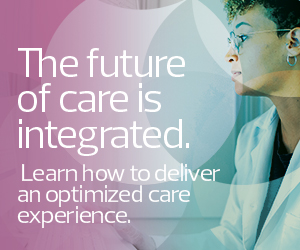Health IT Teams Should Look at Internal Investments First
Health systems that are watching their wallets should first look internally and scrutinize the investments they’ve already made.
“Begin with an app rationalization effort before taking on a new solution. How many applications does your organization use that perform the same tasks? Where do solutions overlap? Might a single platform do the work of hundreds or thousands of apps? Are you fully using the solutions? Do you need to deploy everything from one vendor? Look inward first, because if you haven’t done that work, then you’re not ready to bring on something new,” CDW experts recommend.
Start with a suitable use case for a coherent ROI and move away from one-off projects and disparate endpoint solutions.
LEARN MORE: How AI is making healthcare smarter.
Lessons in Automation for Healthcare Digital Transformation
To combat staff burnout and create a more attractive work environment that can better retain employees, health systems need to pinpoint areas that would benefit from automation.
“The best way to ensure success is to identify a problem that’s important to clinicians and then deploy a solution and strategy that can be integrated with other technologies in the clinical workflow,” says CDW Healthcare Strategist Fred Holston.
During a HIMSS23 session in April, Providence shared its experience in creating a predictive scheduling tool that automated a previously strenuous manual process. The large health system identified the workforce crisis as a major concern, so it envisioned a roadmap “focused on caregivers and how we can help them to get back into those patient care settings and focus less time on administrative tasks,” said Natalie Edgeworth, senior manager of workforce optimization and innovation at Providence.
The health system’s previous approach to staffing plans involved cumbersome spreadsheets and variations across planning development. The predictive scheduling tool now automates that process with data-driven recommended scheduling plans optimized for each department. The reduced administrative burden has helped to reallocate time that can be better used for patient care.
EXPLORE: How application optimization can improve healthcare.
The Power of Data in the Healthcare Industry
Healthcare organizations collect, create, manage and store massive amounts of data daily. A patient’s electronic health record can be rich with notes from a primary care physician, medical imaging and lab results. Ultimately, that data should be used to optimize care delivery, which is why interoperability remains an ongoing journey for many health systems.
“A mature data program touches every facet of healthcare operations if it’s done right,” says CDW Healthcare Strategist Lee Pierce. “It takes the discipline of leaders to actually use data in a meaningful way to affect change. Two areas of focus to start would be data platform modernization and data governance.”
As health systems continue to move toward value-based care and patients expect more personalized offerings, organizations that can continue to make crucial changes will set themselves up for a future that retains and delights staff members and consumers.











